Durga Pujo is a time to freak out, from binge eating to Pujo dating, Bengalis have come a long way, says Ruchira. A Special Feature exclusively for Different Truths.
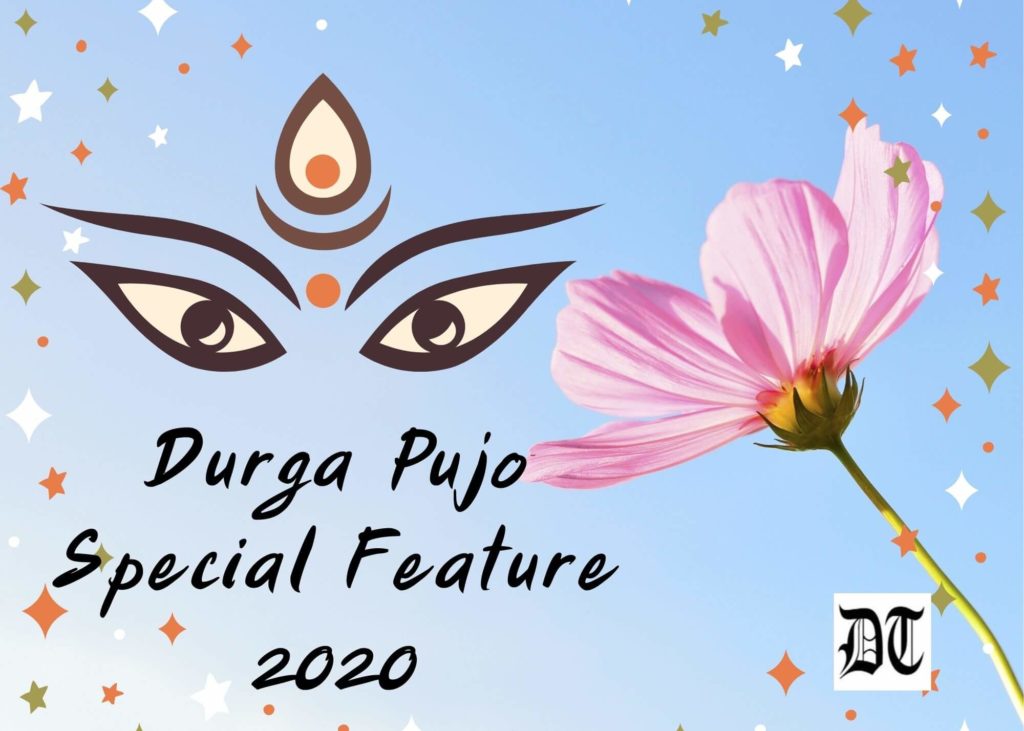
Durga Pujo is to the Bengalis what Christmas is to the Christians, the world over. A season of fun, frolic, merrymaking, family reunions, travels, and excursions – feasting, partying and what have you. Whether you are an authentic full-blooded Bengali or of mixed parentage, you are bound to succumb to the captivating, enchanting aura of the Mother Goddess, when she comes round every year.
In geographical terms, Durga Pujo takes place in what is perhaps the best season of the year. Yes, you have guessed it right, the glorious autumn. Whether is a “Season of mists and mellow fruitfulness” of Keats’ English countryside or golden sunlight, azure tropical skies dotted with fleecy clouds, ripening paddy, verdant meadows, coupled with vast expanses of immaculate white Kaash phool, which aptly sums up the autumn in Bengal. Bright sunny days, pleasant but slightly chilly nights are perfect for celebrations and outings during the festive season, for it would be hard to enjoy oneself in an atmosphere of high humidity and sweltering heat. Shouldn’t we thank Mother Nature for her bounty?
For an average Bengali pre-Pujo shopping is a sine quoa non. He may crib and cringe about money for the greater part of the year, but fiesta season fills him with a gush of generosity. So, he literally goes overboard, while buying things for his wife, children and/or other family members. Earlier, clothes and shoes would figure high on shopping lists, though affluent folks also went in for ornaments and jewellery.
Life appears to have undergone a sea change during the contemporary times. The bucket list now contains mobile phones, electronic toys, accessories, and gizmos. Interestingly, judging by the aggressive campaigns and frequency of ads., gems and jewellery witness staggering sales during this time of the year.
Life appears to have undergone a sea change during contemporary times. The bucket list now contains mobile phones, electronic toys, accessories, and gizmos. Interestingly, judging by the aggressive campaigns and frequency of ads., gems and jewellery witness staggering sales during this time of the year.
When we were little children, and even during our growing up years, anthologies of children’s short stories, penned by various authors were compiled into Pujo Barshikis (yearly volumes). These sold like hotcakes. Adult or universal magazines, like Desh, Nabokallol, Sananda, etc., still bring out bumper Pujo Specials, but children’s literature is on a downslide. Do modern-day kids really have the time to read? I wonder.
What is Pujo without the traditional bhog prasad? All folks, high or low, rich or poor, look forward to the bhog, which must mandatorily include dry thick khichuri /hotchpotch, labra, a light mishmash of veggies, tomato chutney and payesh or rice pudding.
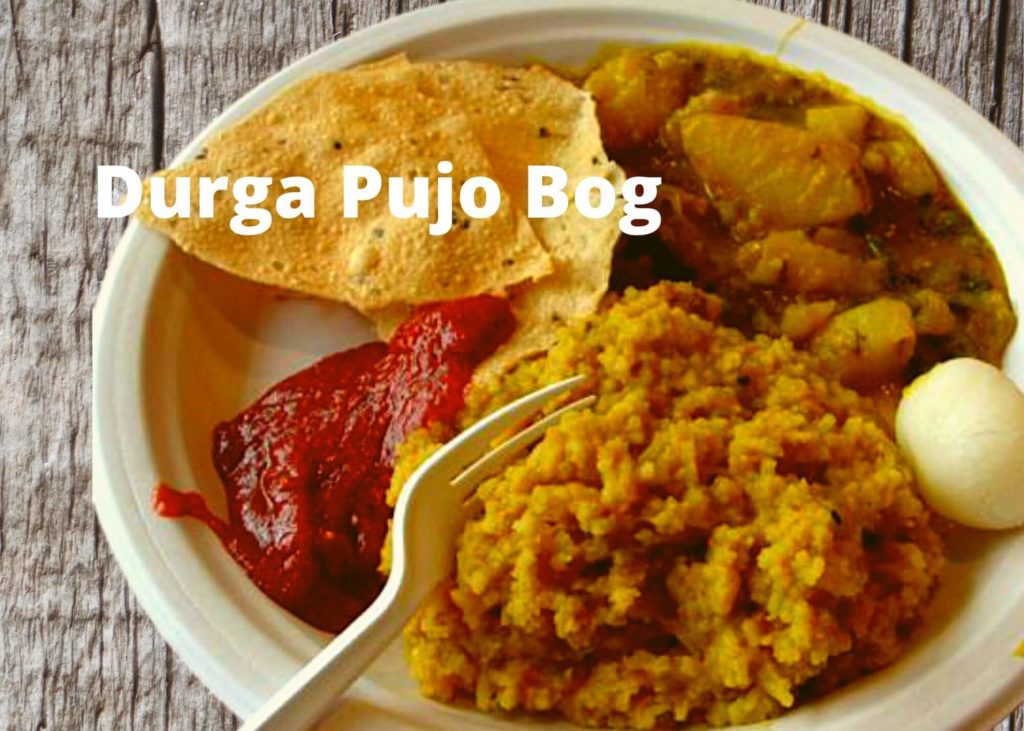
Wait a minute, for the gourmand Bengali there is more to food than bhog. During Pujo, the list of gooey goodies (familiarly termed chakum chukum) keeps growing exponentially. Beginning with the ubiquitous phuchka/pani puri, jhaal mudi and alookabli (spicy tangy potato slices), it moves onto Mughlai Porota and Kobiraji Cutlets…
Far-reaching changes, economic constraints notwithstanding, the basic format is maintained. Wait a minute, for the gourmand Bengali there is more to food than bhog. During Pujo, the list of gooey goodies (familiarly termed chakum chukum) keeps growing exponentially. Beginning with the ubiquitous phuchka/pani puri, jhaal mudi and alookabli (spicy tangy potato slices), it moves onto Mughlai Porota and Kobiraji Cutlets – scrumptious non-vegetarian items, whose basic ingredients include eggs, white flour, and mincemeat, spices and so forth.
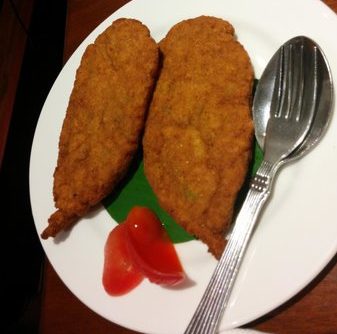
Talking of cutlets, few dishes can match the versatility of the Bengali Cutlet. It is a carryover of ethnic and European culinary arts. Apart from the humble vegetable cutlet, there also exist mutton as well as chicken cutlets, all of them are major crowd pullers. However, the crowning glory happens to be the huge “prawn” (read lobster) cutlets, which come for fancy prices but are highly palatable and thus good value for money. Over the years global, fusion eatables viz., burgers, chowmein, chop-suey too have climbed onto the bandwagon of Bengali delicacies.
It would be criminal not to mention sweets while writing on Durga Pujo. Well, the creative imagination of the Bengali moiraa (halwai, sweet maker) reaches a crescendo during carnival time. There is a fair amount of innovation no doubt.
It would be criminal not to mention sweets while writing on Durga Pujo. Well, the creative imagination of the Bengali moiraa (halwai, sweet maker) reaches a crescendo during carnival time. There is a fair amount of innovation no doubt. But some commonplace sweets too are modified and embellished to cater to divergent tastes and demands. In their new avatars, they successfully rake in good moolah for their creators.
I happen to be a Probashi (nonresident Bengali). Yet, I gather from reliable sources that a new syndrome, Pujo Prem (love during the times of Pujo) has been doing the rounds of the state for a good many years. It implies light flirtations, dating, friendly overtures and overall bonhomie during the four-day long Pujo. Good looking young men and charming belles are much-sought-after during this time.
The not-so-fortunate ones try to dazzle by means of stylish clothing, ornaments and accessories, trendy hairstyles, make-up and more….However, all good things must come to an end, for such is the ephemeral quality of life. Likewise, Pujo Prem also draws to a close by the time of Bijaya Dashami (a watery farewell to the goddess). Interestingly, some young people, (so I hear) manage to convert Pujo Prem into lifelong relationships. Good for them!
Photo from the Internet
Feature picture from PC: thinkstockphotos.in

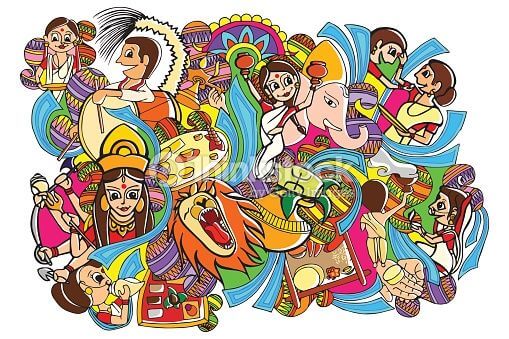

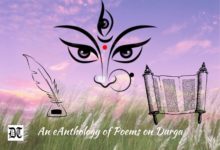
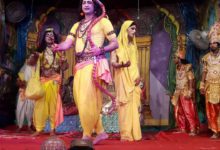


 By
By
 By
By
 By
By